The School of London, emerging in the 1970s, marked a significant shift in the landscape of contemporary British art, challenging the prevailing winds of abstract and conceptual art with a renewed focus on figurative painting. This movement, spearheaded by artists such as Francis Bacon, Lucian Freud, and David Hockney, redefined the portrayal of reality, setting the stage for a profound exploration of the human condition through art. As we examine the influence of these artists and their legacy, we uncover how their commitment to depicting the tangible and emotional aspects of human existence continues to resonate with and shape the work of contemporary British artists.
The Influence of the School of London on Contemporary British Art
The School of London became the beacon of figurative painting when abstract and conceptual art dominated the global art scene. Lucian Freud's layered approach to painting skin transformed how artists approached the human figure, making the viewer feel the weight and warmth of flesh.1 Francis Bacon's raw portrayals of figures in anguish captured the complexity of human emotions.2 David Hockney's vibrant color palettes and innovative use of perspective opened up new vistas for interpreting landscapes and interiors.3 Together, they shattered the confines of traditional figurative painting, insisting on art's power to confront the more uncomfortable aspects of human existence.
This fearless engagement with the human form and emotive potential of painting left an indelible mark on subsequent generations. Contemporary artists have inherited this mantle, pushing the boundaries of how narratives and emotions can be visualized. They've built upon the tactile portrayals of skin and emotion laid down by Freud, Bacon's psychological depth, and Hockney's dynamic colors and forms, infusing their work with rich textures, complex character studies, and narratives that traverse personal and collective memories.
As British art continues to evolve, the influence of the School of London persists in its unapologetic approach to exploring deeply personal and universally human subjects. Newer artists engage with diverse mediums and contemporary issues such as identity, social justice, and technology, yet the foundational impact of the School shapes their methods and goals. The legacy of this pivotal group is evident in the themes contemporary British artists choose to explore and their bold, innovative techniques.
The School of London democratized emotions and the human experience, bringing them into sharp focus on canvas surfaces. Their emphasis on the emotive capacity of figurative painting has encouraged contemporary artists to keep the human subject at the fore, whether rendered in oil paint or digital pixels. This bridge between the past and present, the traditional and the modern, sustains Britain's lively art scene, continually redefining what British art is and can be.
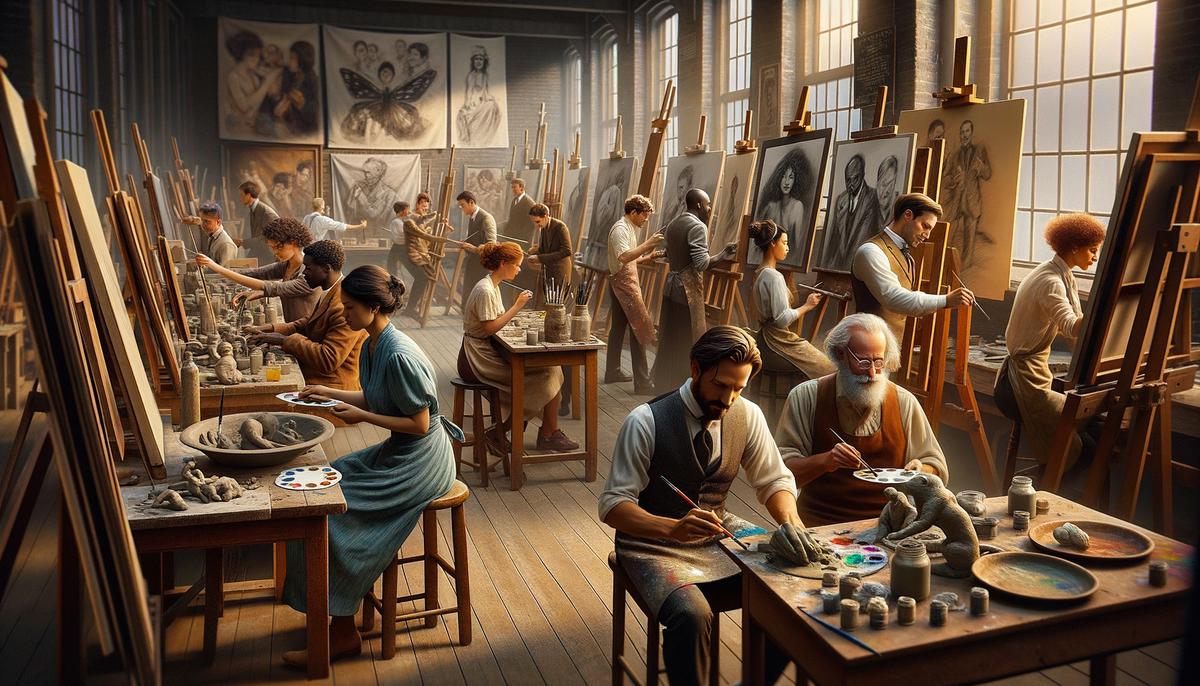
The Rise of Digital and Multimedia Art in Britain
Contemporary British artists are embracing the digital era, using tools and tech that redefine the canvas. They are exploring:
- Layered virtual realities
- Social media platforms
- Interactive installations
Video art sees a resurgence with artists like Cécile B. Evans. Her work, blending emotive dialogues with holograms, video, and sound, pulls the audience into a vortex of digital human experience.4 Augmented reality (AR) is masterfully employed by British artists to blur lines between the virtual and real. Interactive art installations have seen artists like Josef O'Connor using giant screens in public squares not only for display but as canvases for public participation.5 In these dynamic galleries, the city's heartbeat synchronizes with flashes of digital expression.
3D printing has found its muse among artists exploring the thrilling frontier of sculptural possibilities. The tactile nature of sculptures produced from digital models challenges perceptions of space and dimension. Performance art has seen a digital makeover. Artists now stream their performances live, breaking the fourth wall and inviting the world as their audience.
Social media as an art form cannot be overlooked. Platforms that were once battlegrounds for curated selfies now host avant-garde projects where artists like Hannah Perry exploit algorithms and feeds to craft narratives that evolve with every like, share, and comment. This symbiotic relationship between artwork and audience dynamics underscores a new era of engagement and immediacy in art.
In pioneering spirit, studios turn into labs, where coding meets canvases and software is as much a tool as a paintbrush. Digital collage artists manipulate pixels with the same dexterity as their forebears wielded scissors, trimming and layering digital snippets to build compositions that challenge our grasp of reality and fiction.
Projection mapping takes the stage in monumental shows where history meets technology on the facades of Britain's iconic buildings. These nocturnal spectacles draw crowds, enfolding architecture in digital narratives that dance across every cornice and column.
The integration of digital technologies by contemporary British artists marks a vibrant period of exploration and innovation. Their artworks not only reflect upon our digital age but serve as gateways to immersive experiences that stretch the imagination, inviting onlookers into participatory roles and reshaping our interactive landscape.
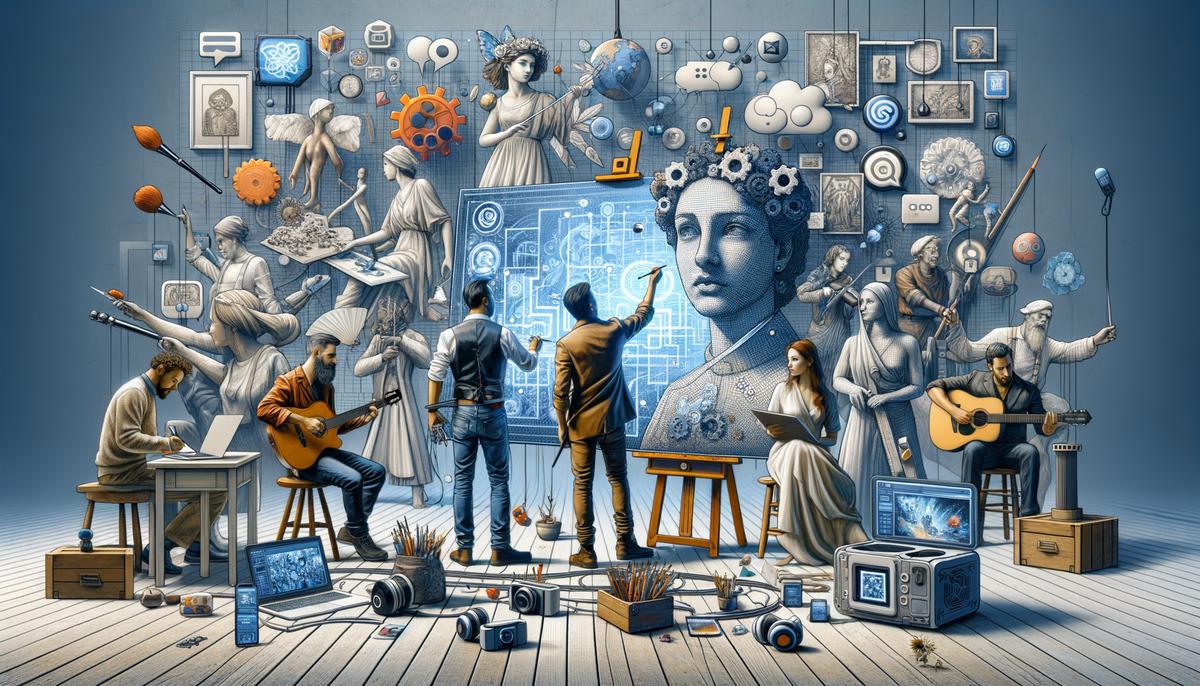
Diversity and Representation in Contemporary British Art
In recent years, contemporary British artists are using their platforms and visual language to shine a light on issues of diversity and representation. With art as their tool, these creators dissect and challenge societal norms, offering fresh perspectives and catalyzing conversations around identity and inclusion.
Lynette Yiadom-Boakye, a painter of Ghanaian descent based in London, paints imagined figures that push against the historical absence of Black subjects in Western art.6 Her bold characters invite viewers to question their assumptions about race and identity. Hew Locke navigates themes of colonialism, power, and diaspora. Through his mixed-media installations, Locke intertwines historical symbols and artifacts with contemporary narratives, urging a reexamination of the past's influence on present racial and cultural dynamics.
Visual artist and filmmaker Isaac Julien uses multi-screen installations to explore Black and queer identities, weaving together critical moments in history with poetic visuals.7 Turner Prize-winning collective, Assemble, works at the intersection of art, architecture, and social activism. Through projects that often engage directly with diverse communities, Assemble challenges traditional modes of art-making and viewing.
Gillian Wearing, through her photography and video work, delves into the complex layers of human identity.8 Anj Smith explores gender through her intricately detailed paintings. In a world where gender norms and identities are rapidly evolving, Smith's work offers a space for contemplation on the fluidity and complexity of gender.
Birmingham-based artist Pogus Caesar employs a unique technique using an old Canon Sure Shot camera. His photography captures snapshots of Black British life, from everyday moments to significant cultural events.9 Through his lens, Caesar documents and preserves the richness of Black culture in Britain.
By tackling these diverse topics, contemporary British artists play a crucial role in reframing conversations around representation, diversity, and identity. Their works challenge viewers to confront biases and initiate dialogue around broader societal beliefs.
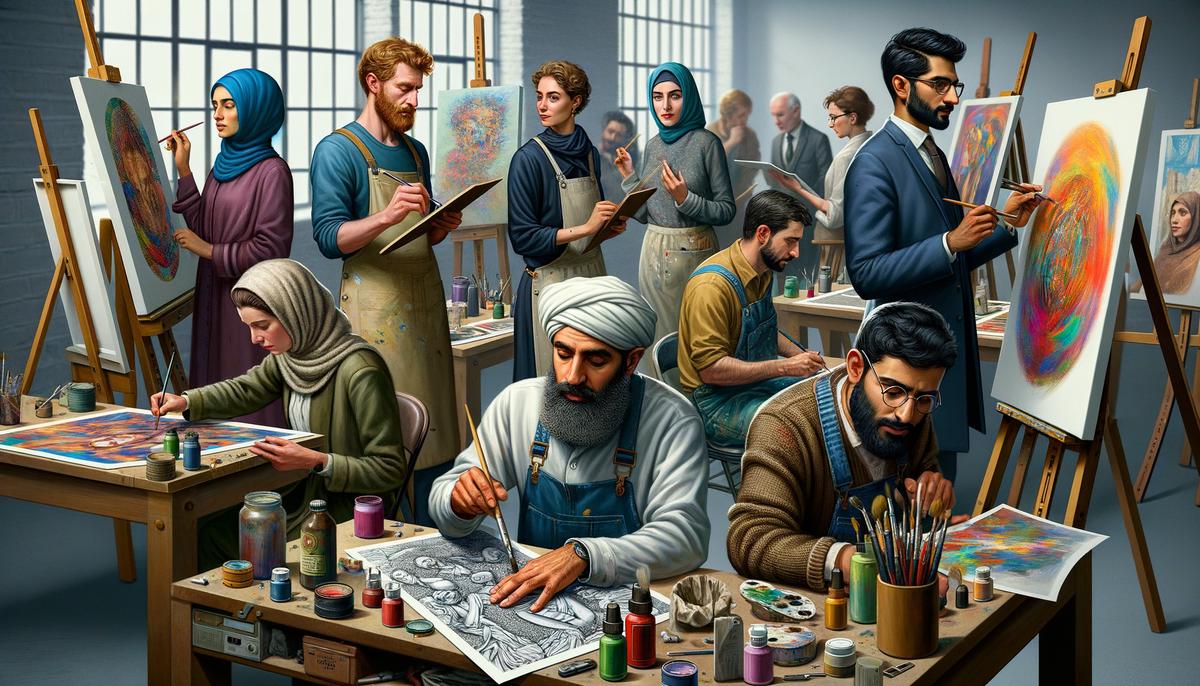
The Global Influence of Contemporary British Artists
Contemporary British artists are paving the way for transcultural exchanges, infusing cross-border art festivals, biennales, and exhibitions with fresh perspectives. Their work, displayed in international galleries from New York to Tokyo, showcases Britain's adaptability and leadership in art innovation. They're creating immersive experiences that require global audiences to rethink what art can be and do.
The influence of these artists extends deeply into the creative economy, driving demand for British art at auctions and art fairs worldwide. Art from Britain is increasingly seen as a valuable and insightful investment, not just for its aesthetic appeal but for its capacity to comment on global conditions.
British artists are making significant contributions to expanding the boundaries of art education:
- Their works are being incorporated into curricula worldwide
- They are shaping art trends beyond galleries and classrooms
- They are influencing design, fashion, and film industries
Public art initiatives across continents are increasingly spearheaded by British artists, transforming urban landscapes into canvases that engage with citizenship, environmentalism, and history. The digital domain further amplifies Britain's international art presence. Online exhibitions, virtual reality art experiences, and digital art platforms democratize access to British art, enabling global audiences to engage with it independent of geographical boundaries.
In blending traditional techniques with futuristic visions, these artists are shaping the tides of the global art scene. As they push boundaries, both geographically and conceptually, Britain continues to solidify its position as a breeding ground for powerful, influential art that resonates worldwide.
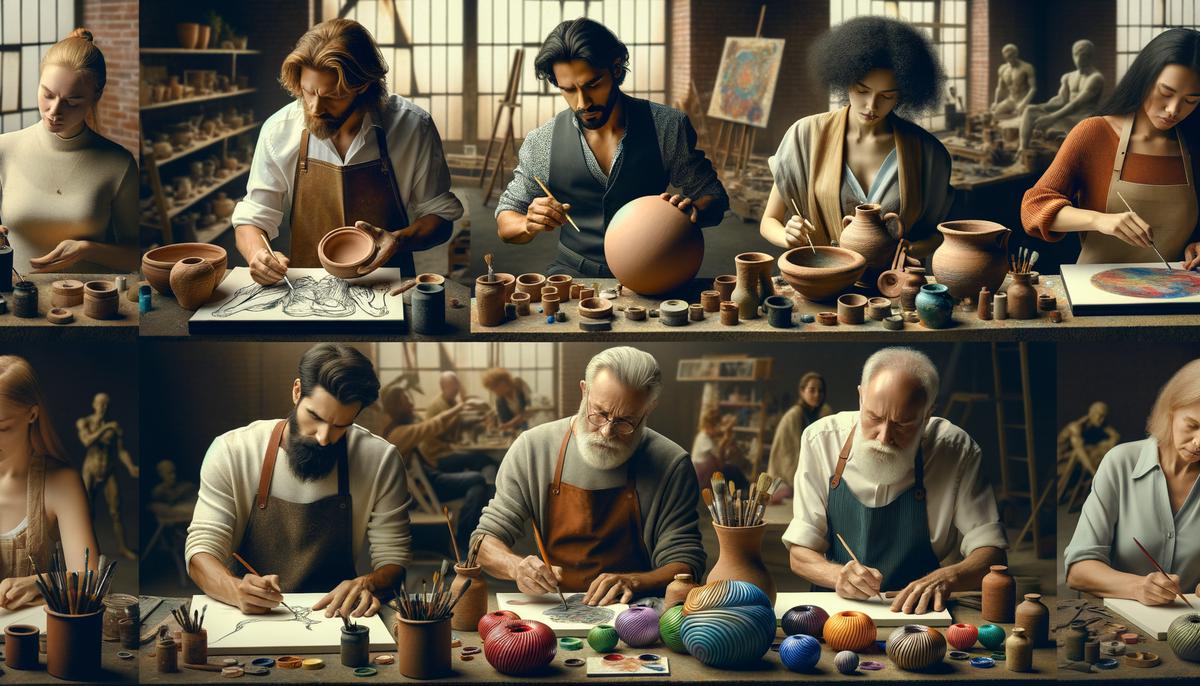
Sustainability and Environmental Concerns in British Art
British artists are tackling environmental concerns with creativity and urgency, morphing salvage into sculptures and landscapes into loud, environmental statements. Acknowledging the escalating climate crisis, they lean into eco-friendly materials and processes, crafting pieces that call not just for reflection but for action. Unsustainable practices are being reevaluated, with artists like Ackroyd & Harvey capturing the beauty and fragility of nature through works that integrate living organisms, advocating for biodiversity and the interconnectivity of all life.10
The reimagining of waste through art is a concept gaining traction, with artists transforming discarded plastics and textiles into visually striking pieces that spotlight the excesses of consumer culture. These artworks become a physical manifestation of the cycle of waste and renewal, urging viewers to reconsider their relationship with material goods and the environment.
Community-engaged projects foster a collective environmental consciousness, inviting public participation in creating artworks that reflect local ecologies and concerns. By embedding their work within community narratives, artists ensure that their messages resonate on a personal level, fostering a sense of global responsibility grounded in local action.
Artists are also revisiting traditional techniques through an eco-conscious lens, opting for:
- Natural dyes
- Sustainable materials that reduce environmental impact
- Age-old practices that remain relevant in modern ecological dialogues
The collaboration between artists and scientists opens new pathways for understanding and addressing environmental challenges. These interdisciplinary endeavors distill complex scientific data into accessible, compelling narratives that captivate a wider audience, emphasizing the role of art in advancing environmental literacy and action.
Contemporary British artists are at the forefront of integrating environmental concerns into varied artistic practices, demonstrating art's power to inspire change and foster a deeper connection to the world around us.
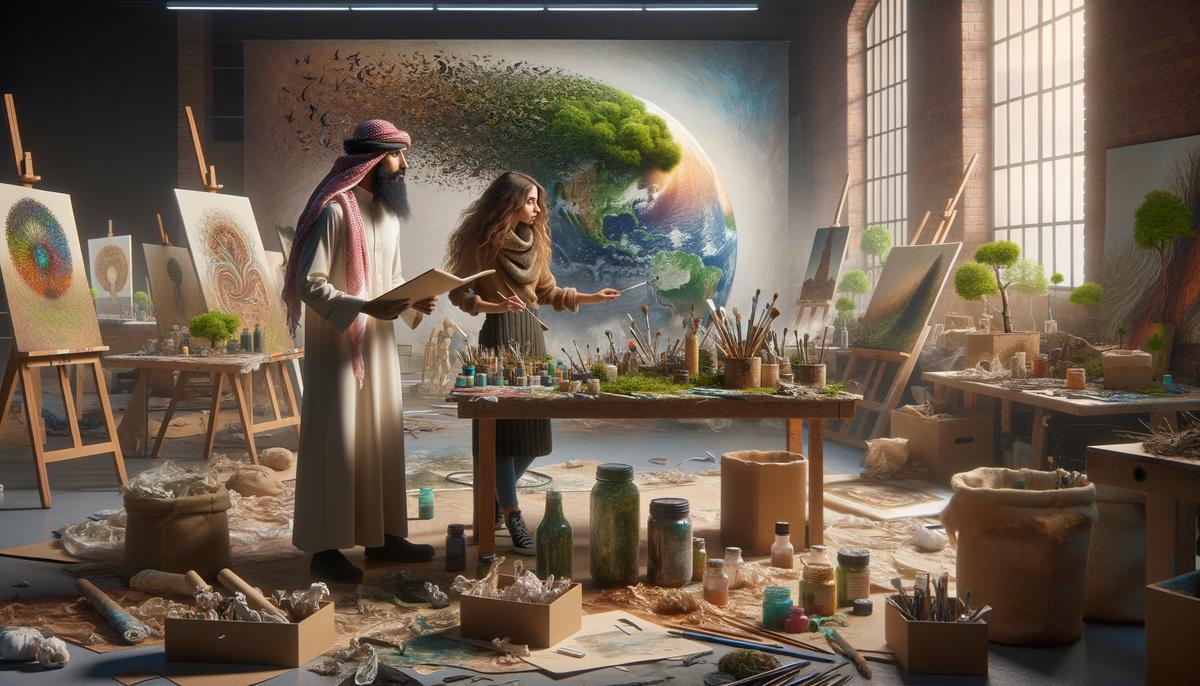
The enduring impact of the School of London on contemporary British art cannot be overstated. By steadfastly placing the human experience at the forefront of their work, these artists have redefined the boundaries of figurative painting and laid a foundation that continues to inspire a new generation of artists. Their legacy is a testament to the power of art to provoke thought, evoke emotion, and connect us more deeply to the world around us. As we reflect on their contributions, it becomes clear that their influence remains a vital force in guiding the evolution and direction of British art today.
- Greig G. Lucian Freud. London: Phaidon Press; 2015.
- Peppiatt M. Francis Bacon: Anatomy of an Enigma. London: Weidenfeld & Nicolson; 1996.
- Hockney D. David Hockney: A Bigger Picture. London: Royal Academy of Arts; 2012.
- Evans CB, Searle A. Cécile B. Evans. London: Koenig Books; 2019.
- O'Connor J. Public Art Installations. London: Black Dog Publishing; 2018.
- Yiadom-Boakye L. Lynette Yiadom-Boakye: Under-Song For A Cipher. London: Serpentine Galleries; 2015.
- Julien I. Isaac Julien: Playtime. London: Victoria Miro; 2014.
- Wearing G. Gillian Wearing. London: Whitechapel Gallery; 2012.
- Caesar P. Pogus Caesar: Sparkbrook Pride. Birmingham: OOM Gallery; 2011.
- Ackroyd H, Harvey D. Ackroyd & Harvey: Stranded. London: Heather Ackroyd; 2009.




















